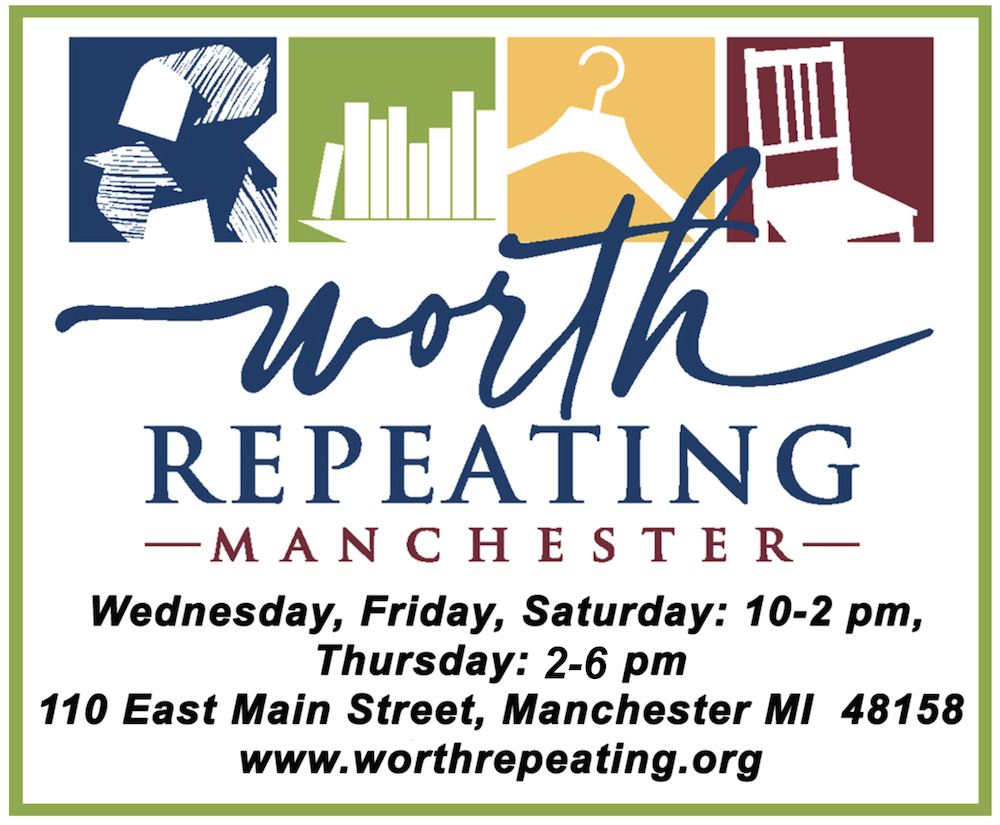Sowing seeds for the future — collecting wildflower seeds at Iron Creek Preserve

Ari Henson holding wild bergamot. Photo courtesy of Ari Henson, Legacy Land Conservancy.
Editor’s note: This article was originally published in Legacy Land Conservancy’s April 2025 E-News and is republished here with permission. Iron Creek Preserve is a brand-new nature preserve in Manchester Township that will open to the public sometime this year.
by Ari Henson, Preserve Stewardship Associate, Legacy Land Conservancy
My first experience with native plant seed collection is a memory that has stayed with me, vivid and unforgettable. I was a Stewardship Intern with the Land Conservancy of West Michigan in the summer of 2022. My crew leader set me loose on a rolling prairie field in west Michigan with nothing but a bucket clipped to my belt and some pruners in my hand.
While this kind of task might seem ordinary to some, to me it felt like the moment a gardener takes their first bite of a vine-ripened tomato after nurturing the plant all season long. My tomato, in this case, was wild lupine (Lupinus perennis), a native perennial plant in the pea family, with flowers so blue and purple they almost look electric.
I spent much of my summer tending to the prairie, removing invasive plants, clearing trails, mowing fields, and creating a healthy ecosystem for the plants — especially the lupine — to thrive day after day.
After an exceedingly hot and dry summer, the lupine seeds cured quickly and by early fall it was time to reap the fruits of my labor. I collected bucket after bucket of crisp, brown seed pods with my fellow crew members, and by the time I returned home that evening, I was covered in dirt from head to toe — and completely fulfilled.
When I started as a Legacy Preserve Stewardship Associate in June of 2024, our Preserve Stewardship Manager mentioned that he wanted to expand upon the existing seed collection program. I was ecstatic! Over the years, my fascination with collecting native seed for conservation and use in ecosystem restoration had grown significantly.
We waited patiently for the flowers to wilt and the seeds to ripen in the fall, and when the time was right, I was free to run wild through the prairies, collecting seeds once more.
I collected seeds at two Legacy preserves: Johnson and Iron Creek.
In the restored prairie at Johnson Preserve, I collected just about everything I could get my hands on — from tiny foxglove beardtongue (Penstemon digitalis) seed pods to silky swamp milkweed (Asclepias incarnata) seeds. I also plucked Indian grass (Sorghastrum nutans) and big bluestem (Andropogon gerardii), the stars of the prairie. When these grasses reach their full height in the late summer, it’s difficult to see more than a few yards when you’re standing in the middle of the prairie.
At Iron Creek, I collected wildflower seeds from the remnant prairie fen located near the preserve trailhead. My bag overflowed with woodland sunflower (Helianthus divaricatus), various goldenrod species (Solidago spp.), America angelica (Angelica atropurpurea), beebalm (Monarda fistulosa), mountain mint (Pycnanthemum virginianum), Indian grass (Sorghastrum nutans), dark-green bulrush (Scirpus atroviens), showy tick trefoil (Desmodium canadense), prairie coneflower (Ratibida pinnata), sensitive fern (Onoclea sensibilis), and swamp milkweed (Asclepias incarnata).
Some of the seeds I collected were dispersed immediately while others will be sown potentially next fall. It really just depends on our staff capacity and the weather. Native plant seeds are typically collected and then spread in the fall so that they can go through a process called winter stratification. Plant species native to North America are adapted to harsh winters, and therefore need to be exposed to very cold temperatures for a period of time in order to germinate in the spring. Stratification was adapted by plants in cold climates so that their seeds do not germinate too early in the winter and die.
Going forward, the stewardship team plans to use the plant seeds from the restored prairie at Johnson and the remnant prairie fen at Iron Creek as the foundation of a more established seed collection program. And at Iron Creek, we’ll continue collecting seeds from the plants in the fen with the goal of creating a seed bank for use in the second lower-quality Iron Creek fen, as well as other fens and wetland properties in Legacy’s land portfolio.
While it is perfectly acceptable to purchase from online native seed vendors, and oftentimes necessary for large seedings, having local genetics included in your seed mixes is very important for ecosystem health and resiliency. For example, a woodland sunflower plant growing at Iron Creek may be more resilient to harsh winters than a woodland sunflower plant growing in southern Ohio, where the winters are milder. Collecting seeds at Legacy’s preserves for Legacy’s preserves helps preserve the local adaptations that these plant species have formed over centuries and ensure the longevity of all of Legacy’s preserves. This gets at the very core of Legacy’s mission to protect land and their ecosystems in perpetuity.
Seed collection and spreading is a mundane and simple task, at first glance. But doing it has deep, long-lasting effects on the land and ecosystems around it. And truth be told, seed collection and spreading is deeply fulfilling to me and many other natural resource professionals. It is almost spiritual for me; getting to be an active part of preserving land for communities to enjoy forever allows me to participate in something much, much bigger than just myself, something that will last for centuries. Nurturing these plants and landscapes is a mission I am proud to be a part of, and I hope that the seed collection efforts at Legacy will continue to grow in the following years.

Seeds collected in the fall at Iron Creek Preserve. Photo courtesy of Ari Henson, Legacy Land Conservancy.

Showy tick trefoil. Photo courtesy of Ari Henson, Legacy Land Conservancy.

American angelica growing in the fen at Iron Creek Preserve. Photo courtesy of Ari Henson, Legacy Land Conservancy.








You must be logged in to post a comment Login